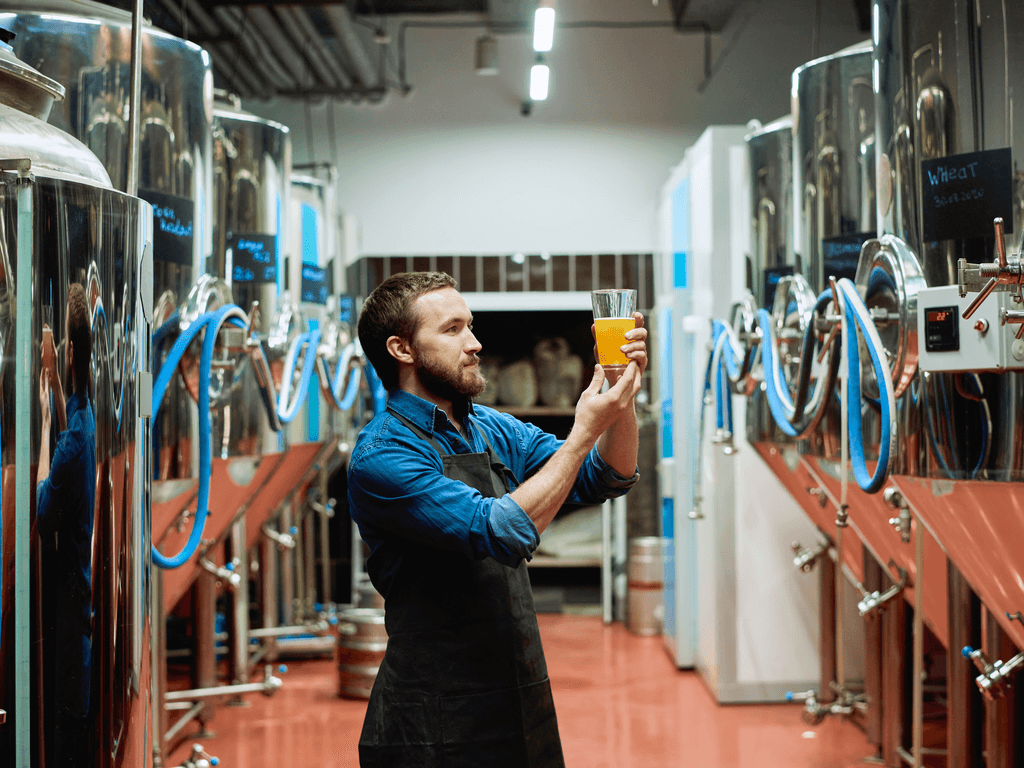How Is Beer Made?

How is beer made? Across the country, breweries give tours so you can see how this classic beverage is made. In New Jersey, there is a law that all breweries must give each visitor a tour once a year before they can even be served. That’s how dedicated some places are to teaching you how beer is made.
But not everyone can get to a brewery, let alone for their favorite kind of beer. That shouldn’t keep anyone learning about how beer is made. It’s an interesting process that takes more work and effort than one would think. For most breweries, this isn’t some drink made by machines in a factory, but by people. Even as technology progresses, there’s always going to be a human element to creating beer.
How is Beer Made?
The brewing process takes time. It’s not manufactured overnight on a factory line, it’s made by specially designed machines, handled by experts, with processes that have been improved and mastered over decades. The process starts with the ingredients.
The Ingredients
Not all beers are made with the same exact ingredients, but most have the same four basic components: water, a starch source, yeast, and flavoring. Outside of water, each brand of beer has a different combination that they use to get their special flavor.
Once the ingredients are collected, they need to be prepared. If the whole grains do not come pre-cracked, a gristmill can crack and open the kernels. Once that’s done, they are mashed and mixed with hot water, where they mix together for a long time. As they mix, the starch releases simple sugars into the water that will help create the alcohol in later parts of the process.
When the kernels and water are done mixing, they make mash, a thick oatmeal-like substance. Wort, a sugary liquid in mash, is then drained into a new kettle where it is brought to a boil. Brewers can and usually do add their choice of hops to get the flavor they’re aiming for.
The Koelschip
After the ingredients are all done being prepared, the next steps come after the wort is cooled and exposed to open air. Many brewers use a heat exchanger to quickly cool the wort and transfer it into a fermentation vessel.
Fermentation
There are three types of fermentation vessels that breweries can use:
- Wooden Barrels: Brewers take the wort and store it with yeast. This is different from aging the alcohol, which is popularly done in barrels. When fermenting, the addition of yeast is what furthers the process.
- Open Square Fermenters: These are large vats of wort and yeast. These are open to the air to allow brewers to easily monitor the fermenting process.
- Cylindroconical Tanks: What has made these tanks the most used form of fermentation is how they trap carbon dioxide and control the temperature throughout the whole yeast process. This makes the removal of excess yeast easier and safer.
What yeast does is convert the sugars in wort into alcohol. As this happens, it releases carbon dioxide. The type of yeast a brewer uses can impart a wide variety of flavors and aromas, another way to create different beer flavors.
The whole fermentation process can take days for some ales, and weeks for certain lagers. Imperial stouts and other boozy beers can be left for a year or longer to ferment.
Maturation
A centrifuge is used to filter the beers and remove particulates. Particulates are extra particles, typically unwanted in beer. Most particulates in beer are sediments.
The centrifuge will filter the beer into a place of storage so it can mature. This can be a wooden barrel or a brite tank, depending on the brewery.
The Packaging
Once the beer is done maturing, it’s time to package it. This may seem like an unimportant step to anyone drinking the beer, but it’s as the beer is being packaged when brewers add some extra carbon dioxide. The CO2 is what gives beer extra fizz. Some brewers even add some extra yeast to help the beer evolve in the bottle or can.
Find Out How Beer Tastes Aftering Learning How It’s Made!
Fire and Ice on Toby Creek has many different types of beers you can taste. There are draft beers, bottles, and cans across over two dozen different brands. Now that you know how beer is made, remind yourself of how it tastes with some favorite name brands, and ones you haven’t tried before. Make a reservation and have a meal to go with your beverage too!